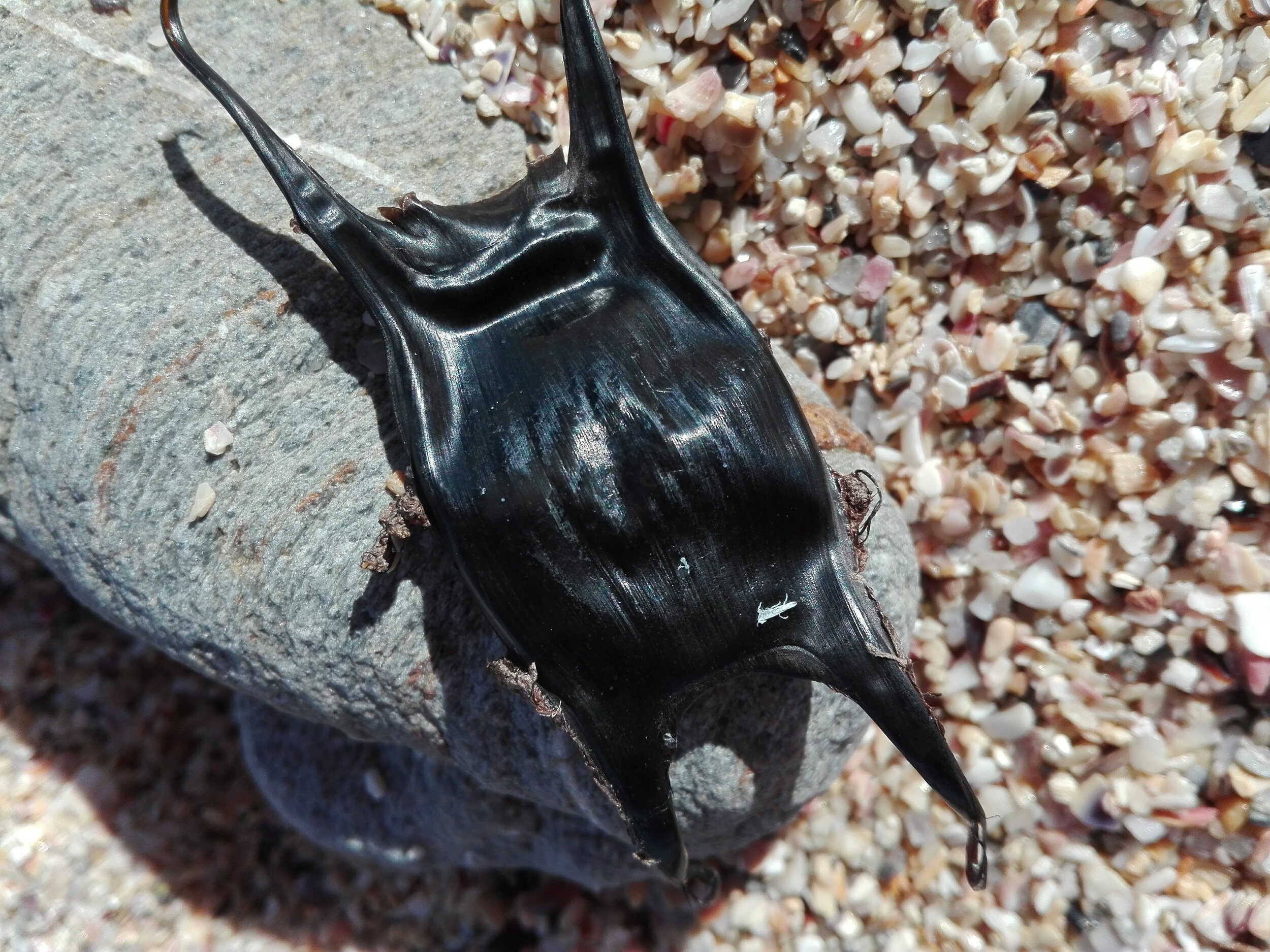The Plight of Mermaid’s Purses – How Ocean Warming Impacts Shark Development
DAN RIPLEY
We often think about ocean warming affecting creatures such as coral reefs and polar bears, but what about the other species that reside in our oceans? Animals that are cold-blooded are particularly responsive to large increases in ocean temperature, as this will change their internal body temperature as well. Dan Ripley, who studies the thermal tolerance of small-spotted catsharks at the University of Manchester, explains that ocean warming will impact sharks in many more ways than previously thought… read on to hear about his research!
We all know that carbon dioxide released through the burning of fossil fuels promotes the greenhouse effect, trapping heat in the atmosphere and causing the warming of our planet and its oceans. In the past 100 years, this process has contributed to earth’s climate warming by 0.6˚C, with a further 1-3.7˚C increase expected by the year 2100. Warming oceans have many effects upon marine life, causing changes in their metabolism, behaviour, and even their growth. In response to warming waters, many animals simply move in search of more favourable conditions, however, for some individuals this is not an option.
A small-spotted catshark (Scyliorhinus canicula) hatchling. Photo: Dan Ripley.
The egg-laying (oviparous) sharks are a group of species that deposit their offspring in small, translucent cases, termed mermaid’s purses (if you’re lucky enough, you can even find old ones along beaches!). Depending on the species, the embryos may remain inside the egg case for up to a year. Whilst inside their egg cases, the sharks are unable to move away from unfavourable conditions, such as high temperatures. Like all fishes, sharks are cold-blooded, meaning they are unable to regulate their body temperature and instead rely almost exclusively on the temperature of their surroundings. Consequently, sharks, and other fishes, are particularly responsive to changes in the temperature of their environment as it changes their body temperature too.
Mermaid’s purse on the beach (Raja miraletus). Photo: Rita Steyn.
Ocean warming affects the growth of sharks in their egg cases. Like the eggs you’re most familiar with, shark eggs also contain a yolk which supplies the embryo with all the nutrients it needs to grow. The shark’s metabolic rate increases in warmer waters, causing it to consume yolk faster. This faster yolk consumption causes the sharks to grow faster and hatch sooner, but at a smaller body size. Work from our laboratory has shown that increasing the water temperature from 15˚C to 20˚C reduces the time taken to hatch by a third, and results in shark hatchlings that are about 10% smaller. This change in early life growth pattern may have lasting consequences. A fish’s body size determines, amongst other things, its ability to migrate, aspects of its personality (yes, fish have personalities!), what it can eat, and perhaps more importantly, what can eat it. Because of the importance of body size in many aspects of an animal’s life, these climate change-induced changes in shark size are an important area of research in the battle to understand and conserve the oceans.
A small-spotted catshark (Scyliorhinus canicula) embryo attached to its yolk sac. Photo: Dan Ripley.
If you’ve enjoyed this article from Dan Ripley, a PhD student studying fish ecophysiology at the Shiels Lab, University of Manchester, you can follow him here @ElasmoDan. You can check out the scientific article in more detail here: Ocean warming and hypoxia affect embryonic growth, fitness, and survival of small-spotted catsharks.
Want to write for us? Check out our ‘Get Involved’ section



